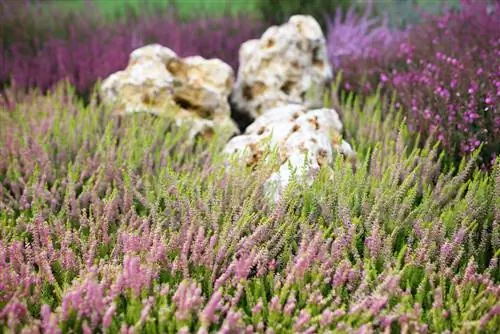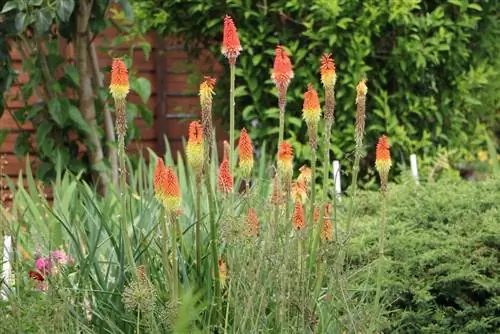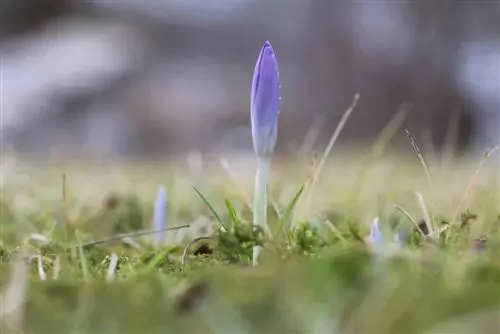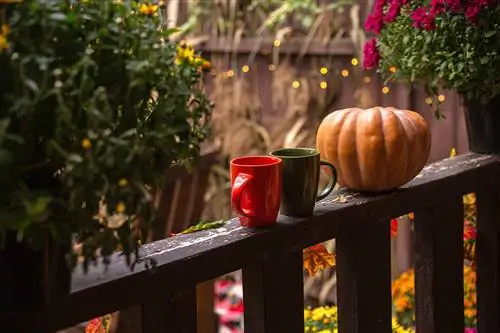- Author admin [email protected].
- Public 2023-12-17 03:39.
- Last modified 2025-01-24 12:45.
Lavender can be planted in spring and autumn. When planting in autumn, the period extends from the end of August to the beginning of October. This means the plants still have enough time to get used to the new location and can prepare for the cold season.
Companion plants
Lavender goes very well with a variety of plants. When combining, it is important that the plants have approximately the same conditions in terms of location, soil and care. This is the only way to ensure that all plants develop well. The requirements of lavender plants are:
- sunny and warm location
- dry and nutrient-poor soil
- little water
- little fertilizer
Since lavender is lime-tolerant, it can also be combined with plants that prefer calcareous soils if the above criteria match.
Tip:
Soil that is too moist or waterlogged quickly leads to root rot in lavender, which causes the plants to die.
Combinations
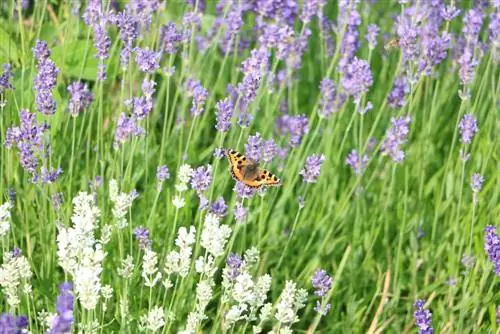
The classic color of lavender flowers are shades of blue. These come into their own particularly well when combined with shades of yellow or white, such as:
- Yellow Scabious
- Yellow Stonecrop
- Grass Lily
If this color combination is too colorful for you, you can also combine lavender with pink, red and violet tones, such as:
- Carthusian Carnation
- ornamental onion
In addition to the color design, you can also combine the lavender thematically. For example, a Mediterranean planting or a rock garden is recommended here.
Lavender
Even though it may sound strange, lavender goes very well with lavender, because in addition to the classic, violet-flowering variety, there are now also plants that bloom white or pink. Since the needs of the different types of lavender are very similar, the bed or rock garden can be geared entirely towards lavender.
Mediterranean planting
As a Mediterranean plant, lavender can of course be combined well with other Mediterranean plants. For a Mediterranean aroma garden, lavender is combined with oregano, sage and thyme. Curry herb or cistus, for example, also go well with lavender for Mediterranean planting.
Curry herb (Helichrysum italicum)
Curry herb, also known as Italian strawflower, is a subshrub with a height of between 20 and 60 centimeters. The evergreen plant has silver-green to silver-grey, needle-like leaves. Its small, yellow flowers appear from the end of June to September. In the cold season, the curry herb needs winter protection.
Rockroses (Cistus)
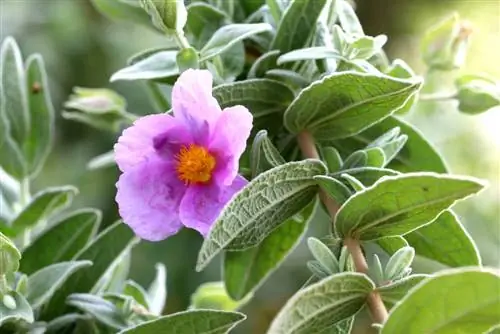
Rockroses are bushy, densely branched sub-shrubs with a height of between 30 and 80 centimeters, depending on the variety. Their flowers are white to pink. Since they prefer extremely well-drained soil, they can also be planted in rock gardens. It is important to have good winter protection, which protects the plants from moisture.
Rock Garden
Lavender prefers dry and sunny locations. That's why it is an ideal plant for the rock garden in our latitudes. It is accompanied there, for example, by saintwort, blue rattleflower, lady's mantle, yellow sedum, grass lily, saintwort, Carthusian carnations, pentecostal carnations, alyssum, scabious or woolly zest.
Blue Rattleflower (Catanache caerula)
The blue rattleflower blooms from June to September. The flowers are usually blue, but there are also white and pink flowering varieties. Their height is between 40 and 60 centimeters. Since Catanache caerula prefers calcareous soils, it can be combined very well with the lime-tolerant lavender.
Ladies Mantle (Alchemilla)
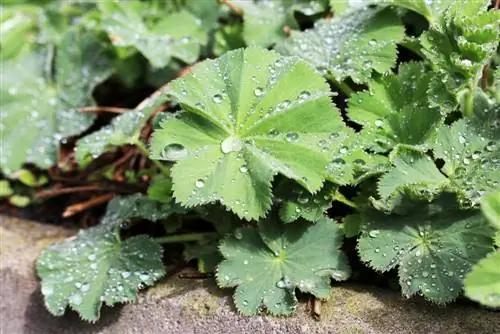
Alchemilla are low-growing perennials that have different demands on soil and location. Little Lady's Mantle, Felted Lady's Mantle and Silver Lady's Mantle feel at home in the rock garden.
Yellow Stonecrop (Sedum kamtschaticum)
The yellow sedum forms 15 to 20 centimeter high carpets. Its orange-yellow flowers appear from July to September.
Grass Lily (Anthericum)
The grass lily produces its delicate, white star flowers between mid/late May and September, which sway gently in the wind. The growth height of the sun worshiper is between 30 and 70 centimeters.
Holy Herb (Santolina)

Sacred herb, also called gray saint flower, is an evergreen subshrub with small, round, white or yellow flowers from June to August.
Carthusian Carnation (Dianthus carthusianorum)

The chartreuse carnation has bright purple flowers that appear from June to September. The growth height of the plants is between 15 and 45 centimeters.
Ptecostal Carnations (Dianthus grationopolitanus)
Peonies are small, compact, evergreen cushions with a height of between 5 and 20 centimeters, depending on the variety. The flower colors range from pink to crimson. The flowering period is from May to June.
Alyssum (Alyssum)
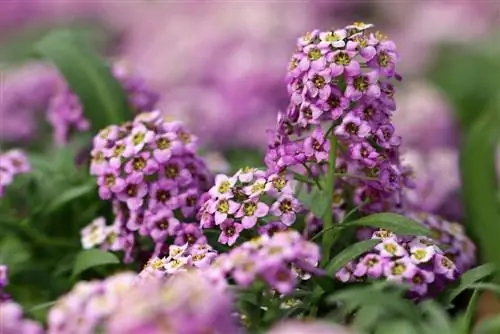
Stone herbs, as the name suggests, cope very well with the conditions in the rock garden. The growth height of the cushions is 15 centimeters. The alyssum flowers in a wide variety of colors, such as yellow, white or various shades of pink to purple. The flowering period is from June to September.
Yellow Scabious (Knautia drymeia)
The yellow scabious has a height of between 40 and 80 centimeters. Its bright yellow flowers “perch” on dark green stems. The flowering period is from June to October.
Tip:
The Macedonian scabious (Kanutia macedonica) with its pink, dark red or violet flowers is also suitable for the rock garden.
Wollziest (Stachys byzantina)
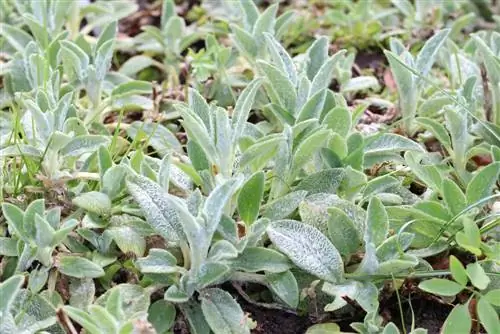
The easy-care Wollziest grows up to 40 centimeters high. Its foliage is silvery and velvety hairy. The rather inconspicuous flowers are purple-pink and appear from July to August.
Ornamental onion (Allium)
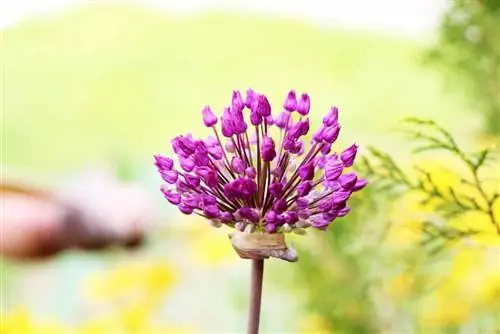
The typical characteristic of the many Allium varieties are their flower balls. Their color spectrum ranges from dark purple to magenta to white. The main flowering period of the plants is between May and June, some species also bloom from April to September. Yellow alliums are particularly suitable for the rock garden.
Tip:
When purchasing, make sure that the Allium variety is hardy.


